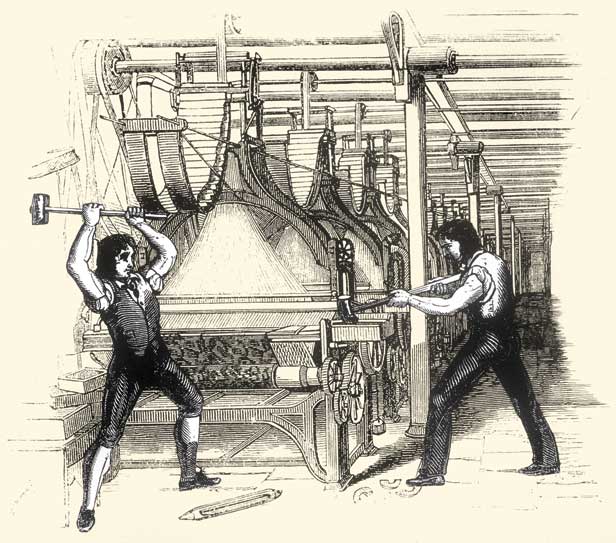‘Tectonic shifts’ in employment
January 5, 2012 | Source: Technology Review

Much as the Luddites feared mechanical looms 200 years ago, today’s middle-class workers have reason to worry that information technology erodes their employment prospects (credit: Mary Evans Picture Library/Alamy)
Information technology is reducing the need for certain jobs faster than new ones are being created.
Several factors, including outsourcing, help explain the state of the labor market, but fast-advancing, IT-driven automation might be playing the biggest role.
For example, Amazon.com reduced the need for retail staffers; computerized kiosks in hotels and airports replaced clerks; voice-recognition and speech systems replaced customer support staff and operators; and businesses of all kinds took advantage of tools such as enterprise resource planning software.
In the crucial years of 2000–2005, job growth happened mainly at the ends of the spectrum: in lower-paying positions, in areas such as personal care, cleaning services, and security, and in higher-end professional positions for technicians, managers, and the like.
During the recession, nearly all the nation’s job losses were in those middle categories — the positions easiest to replace, fully or in part, by technology.
Not enough people are sufficiently educated or technologically savvy to exploit such rapid advances and develop as-yet-unimagined entrepreneurial niches.